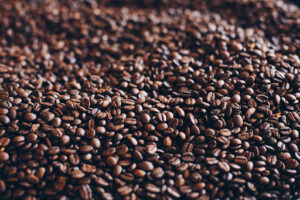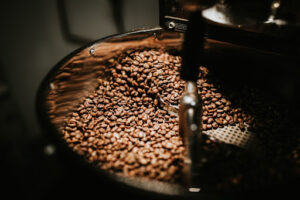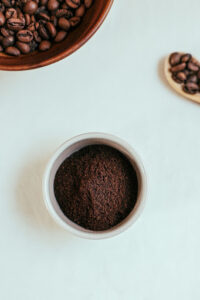From Bean To Mug: The Underrated Journey Of Coffee

Photo by Chevanon Photography | Pexels
Written By: Justice Roote
Edited By: Linda Qi
Designed By: Samantha Porte
Published By: Samantha Porte
Bringing Awareness To Coffee Agriculture
One fateful morning while brewing my morning cup of liquid energy (aka coffee), I had a startling realization. I am an avid coffee drinker, yet I have no idea where my coffee is coming from!
To truly appreciate everything my morning cup of joe does for me, I first needed to understand how my coffee gets from a bean to my mug each day.
Then, out of nowhere, I recalled the words of my 8th-grade math teacher: “If you have a question, chances are someone else has it too.” At that moment, I knew I needed to help anyone else who too was blissfully ignorant of the journey of their coffee.
So, without further ado, let’s go from coffee ignorant to coffee informed together!!

Photo by Adam Lukac | Pexels
The Beginning Of The Coffee’s Journey
Source: National Coffee Association
Let’s start at the very beginning, as all journeys must start somewhere.
The general belief is that coffee originated in the Ethiopian Plateau centuries ago, but in reality no one knows exactly how or when coffee was discovered. However, while scouring the internet trying to uncover the mysterious origin of coffee, I stumbled upon a unique legend.
Kaldi The Goat-Herder
The legend is about a 9th-century Ethiopian goat-herder named Kaldi. One day, Kaldi was out with his goats when he noticed something peculiar. After his goat ate a mysterious berry from a tree it was extremely energetic and later pulled an all-nighter. Once Kaldi discovered this, he shared the information with the abbot of the local monastery who then made it into a drink.
Word got around and as the world moved east, the word of coffee went with it, and that marked the beginning of coffee’s journey around the world.
The 5 Stops in Coffee’s Journey
Source: Britannica & Wikipedia
- Growing & Harvesting
Coffee Flower
Hold on…coffee has flowers?!! (I know right)
Like most plants, they bear flowers before they can bear fruit. Coffee beans are the seeds produced by the coffee plant, so the plant must flower before anything can be harvested.
There are many different species of coffee, but the two most common are Coffea Arabica and Coffea Robusta. Coffea plants are small trees that are native to tropical and southern Africa or Asia.
Coffee Cherry
If you thought coffee flowers were surprising, you would be floored to know coffee beans come from coffee cherries (I hope I am not the only one!)
It takes approximately 3-4 years after planting a new coffee tree to flower and then bear fruit. After the tree flowers, it can take about 3 months for cherries to grow and an additional 4 months to be harvested.
And possibly the most surprising part is that each coffee cherry produces only 2 seeds!
I don’t know about you, but I have gained a newfound respect for the time and effort put into purely growing and harvesting these coffee cherries.
- Drying and Grading
After the seeds are taken from the cherry, they must be dried to make “green” coffee (unroasted and raw coffee beans). There are 3 common practices to dry coffee.
The Dry Process: Drying the freshly picked coffee cherries in the sun while continuously raking and turning until the beans are free of any fruit.
The Wet Process: Soaking the cherries until the cherry and the bean separate
The Pulped Natural Process: A happy medium between dry and wet processing.
Once we have “green” coffee beans they must be graded. There is no universal standard, but many factors are considered when grading coffee, including:
- Growing altitude
- Growing region
- Processing method
- Bean size
- Appearance
- Density

Photo by Juan Pablo Serrano Arenas | Pexels
- Roasting
The key to the aromatic and swoon-worthy coffee qualities we all know and love lies in using high roasting temperatures.
Whether you prefer a light or dark roast, it can all be achieved through roasting. For example, if you want dark-roasted coffee, you simply roast for longer and at a higher temperature. The roasting process differs depending on your preferred coffee. A light roast is achieved through lower temperature for less time.
The temperature is raised anywhere from 180 to 250 °C (356 to 482 °F) for 7 to 20 minutes.
Fun Fact: After roasting, coffee beans lose about 14%- 23% of their weight but expand in size anywhere from 30% – 100%

Photo by Cup of Couple
- Grinding
Some coffee beans are left whole, as it gives consumers more power over the flavour of their coffee (for all of you out there with fancy schmancy coffee machines), but ground coffee is much more convenient and easier to use at home.
The majority of the time, the coffee will be ground or milled after roasting. The modern method is to feed the coffee through a food processor with serrated blades and rollers. The machine will first crack the bean and then grind it down to the desired size.
- Brewing
There are so many ways you can brew coffee, but let’s just go through the most common three.
French Press: This method infuses the coffee by first steeping the coffee grounds in boiling water. Then, a mesh plunger pushes and holds the coffee at the bottom, so your coffee can be poured directly out of the container.
Drip Coffee: This coffee is made by dripping boiling water on the coffee grounds. This process takes a lot longer as the water filters through the grounds and into an awaiting pot.
Espresso Machine: The machine forces boiling water through coffee grounds which is basically the same as the single-serve coffee makers out there. They push hot water through the coffee and into your mug.

Photo by Toni Cuenca | Pexels
From Coffee Ignorant To Coffee Informed!
What did we learn?!
Well, I don’t know about you, but I learned a lot and I am still shocked that coffee actually comes from cherries. I can’t believe I didn’t know this before!
Maybe you already knew that, but either way, I hope you learned at least something that will help you appreciate your morning cup of joe just as much as I am going to from now on.
Sources:
“Coffea.” Wikipedia, https://en.wikipedia.org/wiki/Coffea. Accessed 18 August 2022.
Myhrvold, Nathan. “coffee”. Encyclopedia Britannica, 17 May. 2022,
https://www.britannica.com/topic/coffee. Accessed 18 August 2022.
“The History of Coffee.” National Coffee Association, https://www.ncausa.org/About-Coffee/History-of-Coffee. Accessed 18 August 2022.

